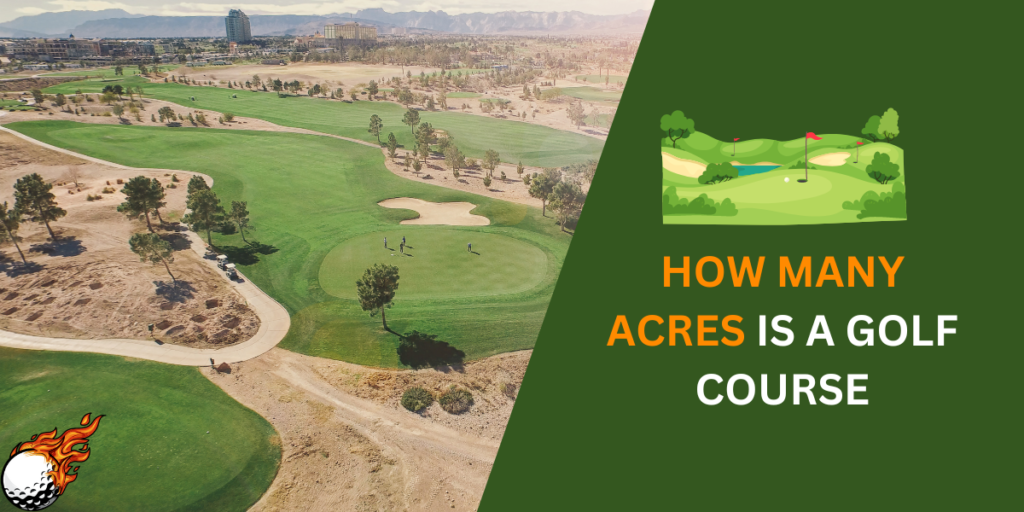
Have you ever wondered how big a golf course really is?
They can seem huge when you’re playing, but have you considered how much land they use? An 18-hole golf course is bigger than a putt-putt or driving range, but even they vary in size.
So, just how much land does a typical golf course use?
We’re about to explore what influences the size of these places, from local courses like Winter Park Golf to famous ones like Ala Wai Golf Course.
- The average 18-hole golf course is about 150 acres, roughly the size of 204 football fields.
- The average 9-hole course, like Winter Park, covers about 70 acres, or 95 football fields.
- Fairways are the largest part of a golf course’s acreage, taking up roughly 50 acres on a typical course.
- Golf courses vary in size from under 70 acres for smaller courses to over 1,000 acres for massive classes.
- The number of holes (e.g., 18 vs. 9), course type, terrain, design, and land availability all affect a course’s size.
- Larger courses often have longer holes, sometimes over 600 yards for a par-5.
- Golf courses can impact the environment through land and water use, sometimes requiring millions of gallons of water per year, especially in arid climates.
Golf Course Size in Acres
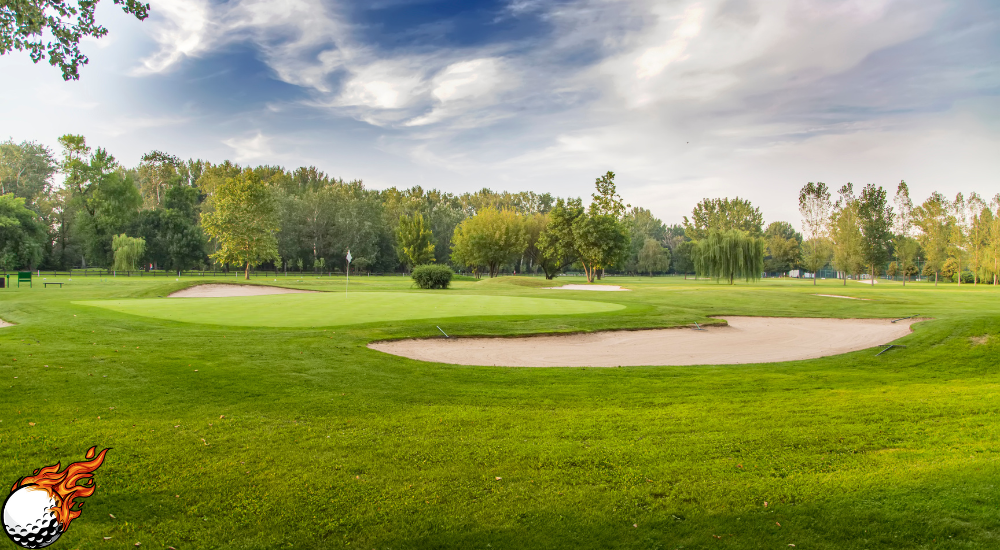
Alright, let’s get down to it. The average size of a golf course is more complex than you might think.
A standard 18-hole golf course usually takes up about 150 acres of land. That’s roughly the size of 110 football fields!
But only some courses are that big. Some are smaller, like the Winter Park 9-Hole Golf Course, which takes up less space. Others can be even bigger, especially those fancy ones designed by golf course architects.
But what goes into all that space? Well, it’s not just the holes you play.
It includes the fairways, rough greens, sand traps, water hazards, and all the areas around them. Practice areas, like driving ranges and putting greens, also need space.
Some golf facilities might even have clubhouses, parking lots, and other amenities.
And remember, this is just an average. Just like some houses are bigger than others, golf courses come in different sizes, too.
Some might be squeezed into tight spaces, like a putt-putt course, while others have plenty of room to stretch out, offering long, challenging holes with high pars.
For example, the European Institute of Golf Course Architects once held a competition to see who could design the smallest course on the smallest piece of land.
They showed that even with limited space, you can still create a fun and challenging golf experience.
So, while 150 acres is a good starting point, keep in mind that golf courses can be a lot smaller or a lot bigger. The size depends on lots of things, and we’ll talk more about those later.
Factors Influencing Golf Course Acres
Now, let’s talk about why some golf courses need more land than others. There are a few big things that can change how much space a course takes up:
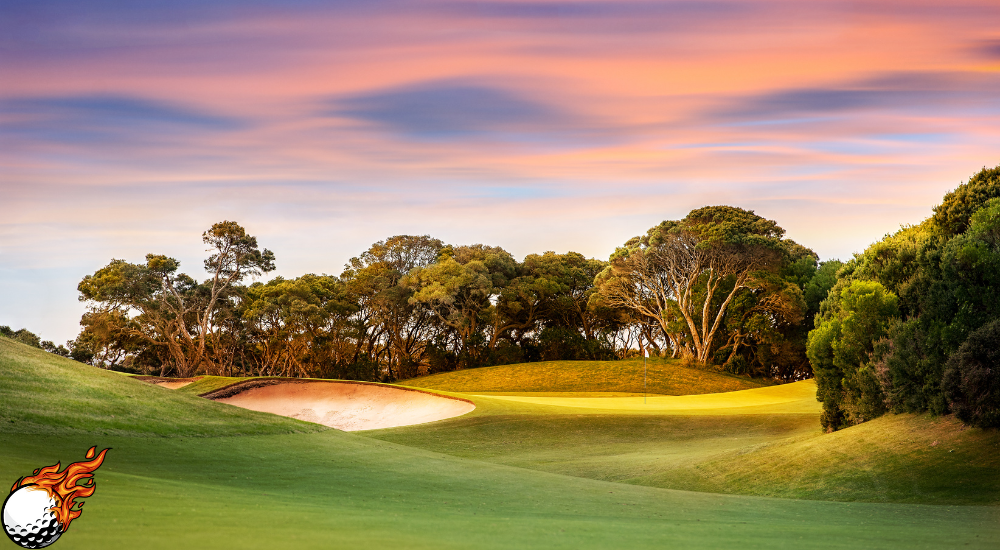
Number of Holes: This one’s pretty simple. A 9-hole golf course, like the Winter Park 9-Hole Golf Course, is obviously going to take up less land than a full 18-hole course. An 18-hole course needs more space for twice the number of holes, fairways, and greens.
Type of Course: Golf courses come in different styles. You have links courses, which are typically found on the coast and have fewer trees and more sandy areas. Parkland courses are built in grassy areas with lots of trees, like those you might see in Florida. Then there are desert courses, often found in places like Arizona, and executive courses, which are shorter and easier, usually with lots of par-3 holes. Each of these types of courses uses land differently.
Terrain: The natural features of the land also play a big role. If a golf course is built on hilly land or has lots of water hazards, it might need more land to accommodate everything. On the other hand, a flat piece of land could mean a more compact course.
Design: Golf course architects have their ideas about how a course should look and play. Some might design classes that are really spread out with long distances between holes, while others might create courses that are more tightly packed. Think of it like planning a neighborhood – some have big houses with lots of yard space, while others have smaller homes closer together.
- Available Land: This one’s important. You can only build a huge golf course if you have the land for it. A golf facility in the middle of a city, like Ala Wai Golf Course in Hawaii, might have less space than a course built on the outskirts of a town like South Pittsburg, Tennessee.
There’s also the cost of the land itself. Some areas are more expensive than others, and that can influence how much land a golf course developer can afford to buy.
A cheaper plot of land might allow for a bigger course, while a more expensive piece of land might mean a smaller course.
Each of these things plays a part in determining how many acres a golf course takes up.
And don’t forget all the other things that need space on a golf course:
- Practice areas: Driving ranges, practice greens, and chipping areas all need their own space.
- Clubhouse: The clubhouse is where you check in, maybe grab a snack, and relax after your round. It needs its building and parking lot.
- Maintenance buildings: These are where the staff keeps their equipment and takes care of the course.
So, as you can see, there’s more to a golf course than just the holes you play. All of these features contribute to the overall acreage of a golf facility.
Examples of Golf Course Acres: Smallest to Largest
Alright, let’s examine some examples of golf courses to see how much their size can change. We’ll start small and work our way up.
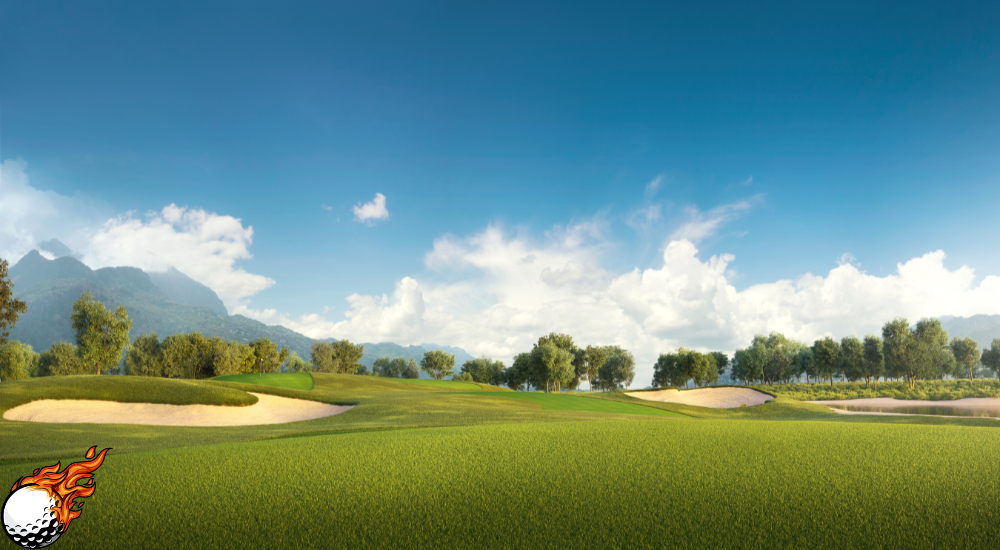
Smallest:
- Winter Park 9-Hole Golf Course (Winter Park, FL): This course is about half the size of a typical 18-hole course, coming in at around 70 acres. It’s a good example of how you can use a little land for a fun round of golf.
Medium:
- Pebble Beach Golf Links (Pebble Beach, CA): This world-famous course is about 163 acres. It’s a links course, which means it’s built on sandy soil near the coast and has fewer trees than other kinds of courses.
Largest:
- Nullarbor Links (Australia): This is a really unique course. It stretches across 848 miles of the Australian Outback! Each hole is at a different roadhouse or rest stop along the Eyre Highway. While it’s not one continuous piece of land, the total distance it covers makes it the largest golf course in the world.
Key Takeaway:
- You can see from these examples that golf courses come in all shapes and sizes. The acreage needed for a golf course can range from under 100 acres to well over 1,000 acres, depending on different factors we’ve already discussed.
Interesting Fact:
- Did you know that the smallest golf course in the world is the “World’s Smallest Golf Course” located in Hazard, Kentucky? It’s just a single hole that measures 18 inches long! It might be small, but it’s a fun way to practice your putting.
How Golf Course Acreage Affects Your Game
Have you ever wondered how the size of a golf course can change how you play? Well, it makes a big difference! Here’s how:

- Length of the Course: Bigger courses usually have longer holes. This means you need to hit the ball farther to reach the green. For example, a par five on a large course could be 600 yards long, while a par five on a smaller course might be closer to 500 yards. That extra distance can be a challenge!
- Difficulty: A course with more acreage can often be tougher to play. More land gives designers more room to add challenges like bunkers, water hazards, and changes in elevation. They can also make the fairways narrower, which means you need to be more accurate with your shots.
- Walking vs. Riding: If you like to walk when you play golf, a larger course might make you reconsider. A course spread out over 150 acres is a lot of ground to cover! That’s why many people choose to rent a golf cart on larger courses. On the other hand, smaller courses like Winter Park 9-Hole Golf Course are much more manageable for walkers.
- Variety: Bigger golf courses can often offer more variety in their design. They might have a mix of long and short par holes, some with wide fairways and others with narrow ones. This can make the game more interesting because you need to use different skills and strategies.
Remember, the size of a golf course isn’t everything.
There are plenty of great classes that are on the smaller side. It’s all about finding a course that suits your style of play and the kind of challenge you’re looking for.
But next time you tee off, pay attention to the size of the course and see how it affects your game!
Conclusion
So, there you have it! We’ve covered a lot of ground (pun intended!) when it comes to how many acres are in a golf course.
We learned that the average 18-hole course is about 150 acres, roughly the size of 110 football fields, but size can vary a lot.
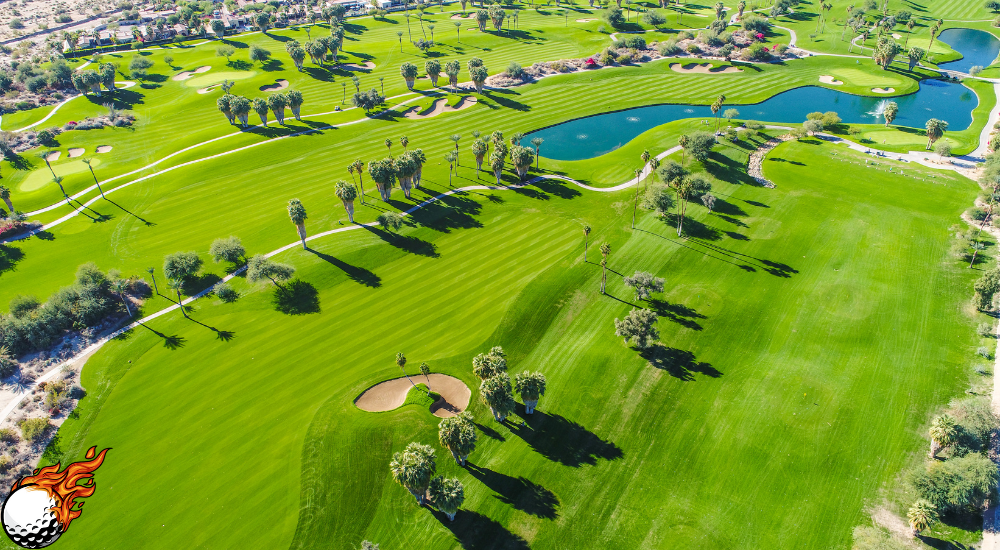
Everything from the number of holes and the type of course to the terrain and the golf course architect’s design choices can change how much land a course takes up.
We looked at some examples, from the smaller Winter Park 9-Hole Golf Course to the sprawling Nullarbor Links, and we even talked about the world’s smallest golf course in Hazard, Kentucky, with its single 18-inch hole!
We also explored how the size (in acres) of a golf course can affect your game.
Bigger courses often mean longer walks (or rides!), tougher challenges, and more variety in pars and pin positions. We also talked about how the size of a golf course isn’t just about the game – it also has an impact on the environment.
Remember, the size of Winter Park Golf Course isn’t everything.
There are plenty of great classes that are on the smaller side, like executive courses with lots of short par-3 holes.
It’s all about finding a course that suits your style of play and the kind of challenge you’re looking for.
But next time you tee off, take a minute to think about all the land it takes to create the fairways, greens, and everything else that makes up the game.
And remember, whether it’s a small local course or a championship course designed by a famous past president of the European Institute of Golf Course Architects, the size of the course is just one of the many things that make each golf experience unique.
Frequently Asked Questions
What is the average size of a golf course in acres?
The average 18-hole golf course covers about 150 acres, roughly the size of 110 football fields!
What parts of a golf course take up the most space?
Fairways take up the largest chunk of a golf course’s acreage. But don’t forget about the rough, greens, bunkers, water hazards, practice areas (like driving ranges and putting greens), and sometimes even clubhouses and parking lots.
Are all golf courses 150 acres?
Nope! Golf course size varies greatly. Some are smaller, like 9-hole courses (around 70 acres, like Winter Park 9-Hole Golf Course), while others can be much larger, sometimes exceeding 1,000 acres.
What factors influence the size of a golf course?
Many things! The number of holes (9 or 18), the type of course (links, parkland, desert, executive), the terrain, the architect’s design choices, and even the cost and availability of land all play a role.
Does the size of a golf course affect how the game is played?
Absolutely! Larger courses usually have longer holes, which can make them more challenging. They also might require more walking (or a golf cart!). Bigger courses can also offer more variety in their layout and features.













